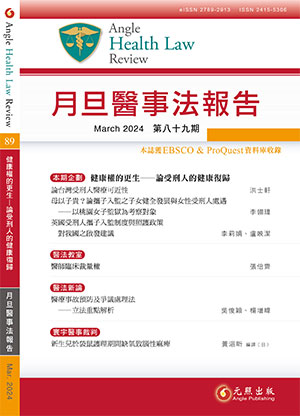新生兒於袋鼠護理期間缺氧致腦性麻痺【寰宇醫事裁判】 試閱
Cerebral Palsy Due to Hypoxia During Kangaroo Care for Newborns
原告X1於被告Y醫院出生,並進行袋鼠護理。然助產師發現X1血糖偏低而中止袋鼠護理,並給與其葡萄糖液而非靜脈點滴,嗣後再由其母X2繼續袋鼠護理。半小時後,X1心肺停止,而因缺氧性腦症致重度腦性麻痺後遺症。X1之父母主張被告對X1的低血糖未進行適當處置,未告知袋鼠護理的風險告知,亦未於袋鼠護理期間由機器或人員持續監測。法院認為,X1並未出現低血糖致心肺停止的典型症狀,難認其死因與低血糖有關;又袋鼠護理並未急遽增加嬰兒風險,則非醫療行為,故被告並無義務詳細告知在袋鼠護理中可能發生的各種風險、注意事項及實施方法等;最後,考量X1出生時為健康狀態,袋鼠護理亦非增加其風險,故以機器或人員監視袋鼠護理非當時一般醫療水準。
Plaintiff X1 was born at the hospital Y as the defendant and underwent the kangaroo care. it was discontinued when the midwife realized that X1 was hypoglycemic and he was given glucose solution instead of an intravenous drip, and the kangaroo care was then continued by his mother X2. Half an hour later, X went into cardiorespiratory arrest and suffered severe cerebral palsy as a result of anoxic encephalopathy. X1’s parent claimed the defendant failed to adequately address X1’s hypoglycemia, filed to disclose the risks of the kangaroo care, and failed to monitor X1’s condition continuously by machine or personnel during the kangaroo care. The court held that X 1 didn’t show the typical symptoms of hypoglycemia resulting in cardiopulmonary arrest, and it was difficult to recognize that the cause of his death was related to hypoglycemia; since the kangaroo care didn’t drastically increase the risk to infants, it was not a medical practice, and therefore the defendant didn’t have any obligation to disclose in detail of the various risks, precautions and the methods of implementation that might occur during kangaroo care. Finally, considering that X1 was born healthy and the kangaroo care didn’t increase his risk, monitoring it with machines or personal was not the usual medical standard at the time.
080-086






